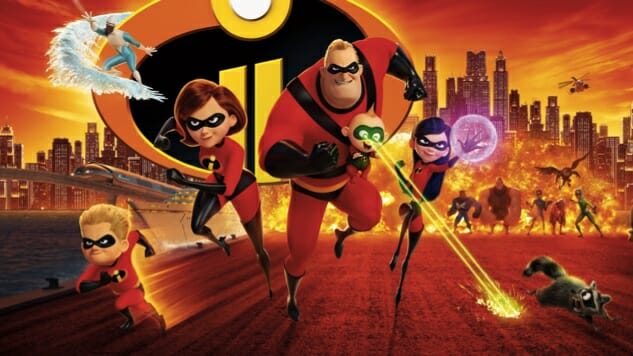
Kids don’t always have the most discerning tastes in, well, anything. Those are skills that come with age. So it’s with great appreciation that we celebrate movies aimed at kids that do more than just go through the motions—movies with originality, crisp storytelling and humor. These dozen movies are the works of filmmakers from the U.S., Japan, England and Brazil, and include both animation and live action. Of course, they have plenty for adults to enjoy, but we appreciate them most of all for providing children with great stories to engage with and helping them to see what great moviemaking is all about.
Here are the 12 Best Kids Movies of 2015:
 12. The House with a Clock in Its Walls
12. The House with a Clock in Its Walls
Director: Eli Roth
Each of the following statements are true: 1) Eli Roth made a film based on a 1973 children’s novel. 2) The film stars Jack Black. 3) It’s a blast. Who knew? Roth sinks his teeth into material that exudes a joie de vivre for the horror that’s central to his work: It’s a movie very much in love with skeletons, spirits and haunts, with the titillating fear they instill in audiences, and the distinct pleasure found in getting spooked out. It’s not scary, per se, though meeker members of its core demographic may find a few of its pieces genuinely frightful. (Leering hobo demons with forked tongues and curved, overlong fingernails can have that effect on people.) Think of the movie as akin to a funhouse, because who doesn’t like fun, especially when “fun” is defined as “Kyle MacLachlan plays a zombie wizard” and “Black bickers and banters with Cate Blanchett like an old married couple in a 1940s screwball comedy”? The film’s at its best when focused on this dynamic, but eventually, a Big Bad™ must rise and a battle must be fought. Here the plot stays lively, too, especially with MacLachlan hamming it up as Jonathan’s former friend-turned-nihilist with bad designs for mankind. (We learn that he saw some shit in World War II, which takes us back to a mutation of the movie’s grief element—PTSD changes a person.) But as delightful as relentless CGI monster mayhem is—and there’s plenty to go round as The House with a Clock in Its Walls rolls through its final act—it’s the lovely character work that makes the story memorable. Roth and his cast pack a surplus of exuberance into a children’s fantasy mold that’s by now grown musty. Maybe putting that mold in the hands of a horror auteur is the best way to abate it. —Andy Crump / Full Review
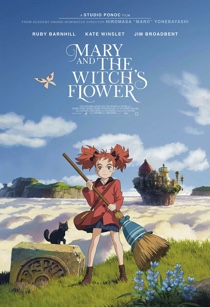 11. Mary and the Witch’s Flower
11. Mary and the Witch’s Flower
Director: Hiromasa Yonebayashi
There’s something heartbreaking about the idea of a child who’s eager to help around the house but creates more of a mess than they end up cleaning. That’s Mary, the title character of Hiromasa Yonebayashi’s new film Mary and the Witch’s Flower. She wants to be useful to her great-aunt Charlotte (Lynda Baron), and to Charlotte’s housekeeper, Miss Banks (Morwenna Banks), but she can’t relieve Charlotte of an empty teacup without dropping it on the floor. The kid’s a walking disaster. It’s practically tragic. She’s a good kid, she just has nothing to do, until she meets a couple of outdoor cats who lead her to a clutch of glowing blue flowers which capture her curiosity on sight. Not knowing exactly what they are (hint: they’re witch’s flowers), Mary takes them back to Charlotte’s and quickly discovers that the flowers bestow temporary magical abilities on whoever touches them. Mary and the Witch’s Flower’s plot—and, boy, there’s a lot of plot—kicks off from there: Mary is whisked away by a flying sentient broom to an academy for witches, led by Madame Mumblechook (Kate Winslet) and Doctor Dee (Jim Broadbent), who put on a kindly front that disguises unsavory intentions. There’s a familiarity to Mary and the Witch’s Flower as narrative: Harry Potter-lite by way of Studio Ghibli-lite with a dash of Yonebayashi’s past thematic interests. The whole thing is spirited, gentle and unfailingly lovely. We all look for magic in the world around us, and when we do the world routinely lets us down. Movies like this remind us that there’s magic, and life, in art—and perhaps especially in animation. —Andy Crump / Full Review
 10. Mirai
10. Mirai
Director: Mamoru Hosoda
In the cosmology of human experience, every child born is at once the heart and center of their own universe. Through no fault save their own innocence, one might imagine themselves the sun, resplendent in glow of their parent’s love and admired by every person imaginable. To the mind of such a child, the birth of a sibling must seem akin to the advent of a rival star, stealing across the sky to siphon away their parents’ affection. Herein lies a lesson in love. Cosmic analogies aside, the essence of this story is the premise of Mamoru Hosoda’s Mirai, the seventh film from the veteran director and the latest of his explorations probing at the subject for which he is best known for—family. The film follows Kun, a four-year-old boy who struggles to cope with the birth of a baby sister, Mirai, into his small family. His cries for attention spurned and selfish outbursts rebuked, Kun retreats into an imaginary world surrounding the garden situated at the heart of his family home where he is visited by visions of his loved ones from both the past and future. It’s through them that Kun slowly begins to grasp how Mirai’s life and his own are links in a larger chain of consequence, entwined together by a force as resolute as it is ephemeral. Mirai is restrained in its concept, especially when compared to the fantastical escapism of Hosoda’s previous work. While the film dabbles in the aforementioned moments of temporal and spatial transportation, these moments themselves are prefigured throughout the film as the overactive imaginings of a child’s mind and played for comedy rather than pathos. In reality, the story takes place entirely within Kun’s modernist family home whose very construction, courtesy of real-life architect Makoto Tanijiri, reiterates Mirai’s broader themes of familial causality and connection. —Toussaint Egan / Full Review
 9. Smallfoot
9. Smallfoot
Sergio Pablos is best-known as the sole creator of the Despicable Me franchise, which has grossed more than $3.5 billion dollars for Universal Pictures. So it’s no surprise that Warner Brothers wanted some of that magic, commissioning a film based on Pablos’ book Yeti Tracks about a village of giants living atop a secluded Himalayan mountain, following the dogmatic religion which denies the existence of anything below. When one young Yeti, Migo (Channing Tatum), sees a plane crashing with a human—a Smallfoot—bailing out with his parachute. When he tells the villagers, their leader the Stonekeeper (Common) tries to convince him not to believe his own eyes. The devout Migo has to wrestle between his faith and evidence to the contrary. What follows is an adventure into a world that has been hostile to the Yeti, an unlikely friendship and a discovery of a difficult truth. A desperate and unethical nature documentarian Percy (James Cordon) is trying to get his own proof of Bigfoot, and the two worlds inevitably collide. There’s plenty of humor to go with the film’s heart, giving kids and adults to plenty to enjoy. —Josh Jackson
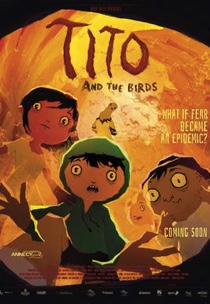 8. Tito and the Birds
8. Tito and the Birds
Directors: Gustavo Steinberg, Gabriel Bitar, Andre Catoto
Parables, fairy tales and fables play an important role in teaching children how to navigate and survive (and eventually become part of) the adult world. Of course, the best ones have plenty to offer adults, as well. Tito and the Birds, a stunningly unique and beautiful animated gem from Brazil, deftly and lovingly constructs such a universally relatable parable about how fear, especially fear of the “other,” can paralyze the community and prevent it from enjoying even the most basic aspects of life, even as those in power who spread that fear thrive. At a time when fascism and authoritarianism are on the rise, I can’t think of a better and more relevant theme for such a modern cautionary tale. That doesn’t mean that Tito and the Birds is just a dry, didactic feature-length lesson on how people should cope with their fears for a better society. (That’s the cherry on top.) Our hero is the brave and rebellious science nerd, Tito, who wholeheartedly supports his scientist father’s controversial invention, a machine that allows humans to once again communicate with birds. With its giddy and hypnotic mix of oil painting backgrounds and digital animation in service of a wonderfully inventive story surrounded by kooky, immediately lovable characters, Tito and the Birds is also one of the most original animated works of the year. —Oktay Ege Kozak / Full Review
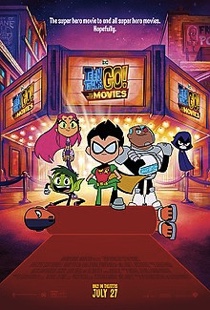 7. Teen Titans Go! to the Movies
7. Teen Titans Go! to the Movies
Directors: Aaron Horvath, Peter Rida Michail
With Teen Titans Go! to the Movies, the long-running Cartoon Network series joins the ranks of still-running animated series that were deemed popular enough to get a movie of their very own. Much like The Simpsons Movie and South Park: Bigger, Longer & Uncut, the show’s creators use the opportunity to distill and put on display what has made the show so popular in the first place. The result is one of the funniest “superhero” films of the year, and one that allows Robin and company to join Deadpool—Statler and Waldorf style—on the balcony poking fun at the clichés, blindspots and foibles of the current Big Genre on Campus. The premise of “Robin wants his own movie. What must he do to get one?” is all the framework directors Horvath and Peter Rida Michail need to support a sustained skewering of the current frenzy of superhero moviemaking. Its main goal is to be a fun, family-friendly movie, and in this it’s wildly successful. If you’re looking to convert a skeptic of the TV series—or even just looking to extract an admission it’s not all bad—this is your best bet. If you’re an older fan of the DC universe, the movie, like the series, possesses its share of deep cuts and obscure character references to chew on and enjoy. And if you really enjoy seeing the characters and conventions of a genre mocked and subverted, Teen Titans Go! to the Movies has you covered there, too. —Michael Burgin. / Full Review
 6. Ralph Breaks the Internet
6. Ralph Breaks the Internet
Directors: Phil Johnston, Rich Moore
When it was released in 2012, Wreck-It Ralph hit theatergoers over the head with its incredible animation, video-game call backs and moving story. Its success made a sequel inevitable, and Ralph Breaks the Internet picks up where the original film left off. Ralph (John C. Reilly) has come to terms with playing the villain in his “home” videogame, Fix-It Felix Jr., during the day, in large part because he gets to spend time with his best friend, Vanellope (Sarah Silverman), during their off-hours. As the title suggests, and as sequels tend to do, Ralph Breaks the Internet greatly expands the Wreck-It Ralph universe even as it further develops the tensions inherent in the relationship status quo present when the film begins. Wreck-It Ralph existed in a self-contained bubble—a villain longed to be a hero. A glitch longed to be fixed. Together, they help one another understand the beauty within and save one another. Ralph Breaks the Internet bursts out of those confines and escapes to the larger stage of the internet. Directors Phil Johnston and Rich Moore are no strangers to world building, having worked together on Zootopia, and it’s in bringing worlds to life that the power of Disney’s team of artists and craftspeople is most apparent (and impressive). But ultimately, much like the original, Ralph Breaks the Internet delivers it strongest punches when it’s focused on the evolution of Ralph and Vanellope’s relationship. It’s clear pretty much from the start that their relationship has become toxic. Ralph, well-meaning as he may be, has formed an unhealthy attachment to his best friend. As we as a society continue to define toxic masculinity and what abuse looks like, Ralph Breaks the Internet feels like a timely introduction to the topic for children. Instead of being just another manifestation of the “girl power/you can be anything” trope, it populates the screen with women in powerful positions—as an actual CEO, as the leader of a dope car crew, and as a little girl trying to find her place in the world. It’s a reminder that girl power exists naturally; it does not need to be forced. That’s a message worth building a franchise around. —Joelle Monique / Full Review
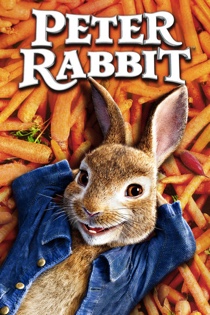 5. Peter Rabbit
5. Peter Rabbit
I blame the marketing campaign for missing the cgi/live-action take on Beatrix Potter’s garden pest when it first came out. The early commercials pictured a protagonist who seemed insufferable and a bit of a douche—and frankly, 2018 has been a year where my tolerance for smug pains-in-the-butt has been all but exhausted by actors on the political stage. Thankfully, the rest of my family saw it anyway, and quickly convinced me to give it a try. This iteration of the children’s classic character is spirited, clever and, while not quite Paddington 2 levels of anthropomorphic storytelling—the gold standard, after all—an undeniable gem in a year filled with animated treasures. Director Will Gluck and his team have a created a world where the humor inherent in Potter’s works is allowed to run free. Coupled with solid performances from the actual humans (Rose Byrne and Domhnall Gleeson), this film would likely have been best of show any other year. Instead, it’ll just have to settle for making $350 million worldwide on a budget of $50 million … and being a reason parents can enjoy watching animated farm animals up to mischief along with the kids. —Michael Burgin
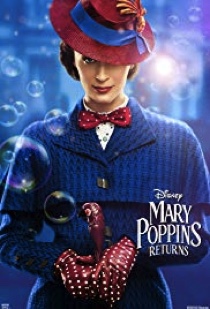 4. Mary Poppins Returns
4. Mary Poppins Returns
More than a half-century after she first floated down from the sky with her umbrella, Mary Poppins is back in a sequel, which takes place during the Great Depression. Jane and Michael are all grown up, as is Bert’s young assistant Jack, a lamplighter who’s just as at ease with the inexplicable magic of Mary Poppins as the old chimney sweep was. Michael is a down-on-his luck widower whose three children have been forced to grow up too fast in the year since their mother’s death. When Mary Poppins shows up, having not aged a day, Michael begrudgingly hires her, though he can’t even afford to pay back the loan on his house. Mary Poppins Returns adheres to the Star Wars philosophy of recycling storylines and set pieces that worked the first time. The film is filled with nostalgic nods to the past, and unless that fact itself bothers you, the results are as light and warm-hearted as the original. Emily Blunt may not be Julie Andrews, but she does an admirable impression, and Lin-Manuel Miranda is a more charming cohort than the notoriously bad-accented Dick Van Dyke (who reprises one of his roles as the elderly banker Mr. Dawes, complete with an adorable little dance). Mary Poppins’ magic is the deus ex machina that keeps any real danger or possibility of failure at bay, but the songs and dancing and imaginative worlds to visit with everyone’s favorite nanny are the real point here, an opportunity to forget your worries and trip the light fantastic. —Josh Jackson
 3. Incredibles 2
3. Incredibles 2
Director: Brad Bird
Incredibles 2 starts right where the first film ended, with the costumed Family Parr reacting to the arrival of the Underminer (John Ratzenberger). Their scuffle with the villain gains the attention of Winston Deavor (Bob Odenkirk)—or more precisely, allows Deavor and his sister, Evelyn (Catherine Keener), to gain the attention of the Parrs. The siblings want to bring supers back into the light, using Winston’s salesmanship and Evelyn’s tech to sway public opinion back to the pro-super side. To do so, they want to enlist Elastigirl (Holly Hunter) as the tip of the spear in their charm offensive, leaving Mr. Incredible (Craig T. Nelson) on the sidelines for now. (She tends to fight crime in a manner that results in less property damage than her husband, after all.) This sets up a second act that’s firmly by the numbers in terms of story development—watch the husband try to succeed as a stay-at-home dad!—yet no less enjoyable. Bob’s attempts to handle teen romance, Jack-Jack’s manifestation of powers and, horror of horrors, “new” math will strike a chord with any mom or dad who has ever felt overwhelmed by the simple, devastating challenges of parenthood. (The family interactions, one strength among many with the first film, remain a delight in the sequel.) Meanwhile, we get to watch Elastigirl in action, as she encounters, foils and matches wits with the film’s mysterious villain, Screenslaver. As in the first film, watching Helen Parr do the hero thing is also quite the delight—she’s resourceful, tough and, above all, a professional. Watching Elastigirl operate almost makes one feel sorry for the criminals. Delving more into the plot would do the film a disservice—suffice to say both villainous and family challenges are faced, and it takes a village, Frozone (Samuel L. Jackson) and Edna Mode (Bird) to emerge victorious. Whether you enjoy Incredibles 2 as much as the original will likely depend on your opinion of the latter, but regardless, you’ll be happy both exist. And in today’s sequel-saturated environment, that is practically a superheroic achievement in itself. —Michael Burgin / Full Review
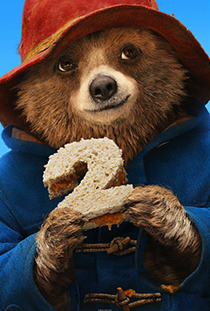 2. Paddington 2
2. Paddington 2
Director: Paul King
A sequel to 2014’s Paddington, Paddington 2 picks up where its predecessor left off, with Paddington Brown (né Bear and voiced by Ben Whishaw) living contentedly with his human family, including Hugh Bonneville (Downton Abbey) and a newly name-recognizable Sally Hawkins (The Shape of Water), joined by that British A-Lister of yore Hugh Grant, dramatic heavyweight Brendan Gleeson, and many others. (In fact, one of the simple joys for parents watching the film lies in recognizing this or that British actor.) A simple, commendable desire to find a good gift for his Aunt Lucy (currently spending her days in a nice retirement home for bears in Lima, Peru, natch) leads Paddington to set his eyes on a certain antique pop-up book as the perfect present. When that scoundrel and fading thespian Phoenix Buchanan (Grant) also sets his sights on the same book, well, hijinks, misunderstandings and adventure ensue. Paddington 2 reminds us how difficult it can be to pull off a sweetly tempered, gently moving children’s movie by doing exactly that, and doing it so well. —Michael Burgin / Full Review
 1. Spider-Man: Into the Spider-Verse
1. Spider-Man: Into the Spider-Verse
Directors: Bob Persichetti, Peter Ramsey, Rodney Rothman
There’s something rare about films like Spider-Man: Into the Spider-Verse, where ingredients, execution and imagination all come together in a manner that’s engaging, surprising and, most of all, fun. Directors Bob Persichetti and Peter Ramsey, writer-director Rodney Rothman, and writer Phil Lord have made a film that lives up to all the adjectives one associates with Marvel’s iconic wallcrawler. Amazing. Spectacular. Superior. (Even “Friendly” and “Neighborhood” fit.) Along the way, Into the Spider-Verse shoulders the immense Spider-Man mythos like it’s a half-empty backpack on its way to providing Miles Morales with one of the most textured, loving origin stories in the superhero genre. This intensely collaborative endeavor clicks on all cylinders in a manner even the MCU could learn from. As a result, Spider-Man: Into the Spider-Verse vaults into consideration as one the best Spider-Man films ever. —Michael Burgin / Full Review